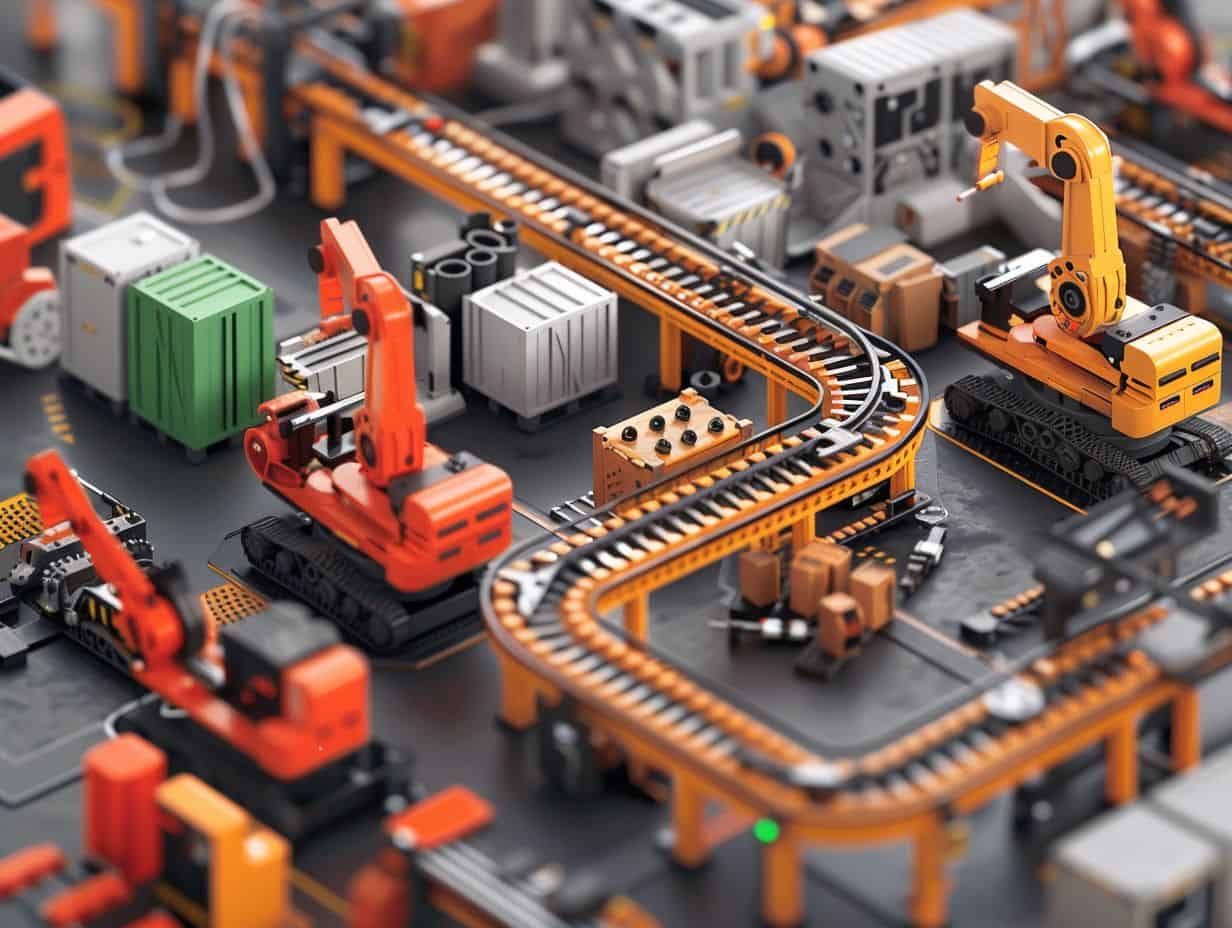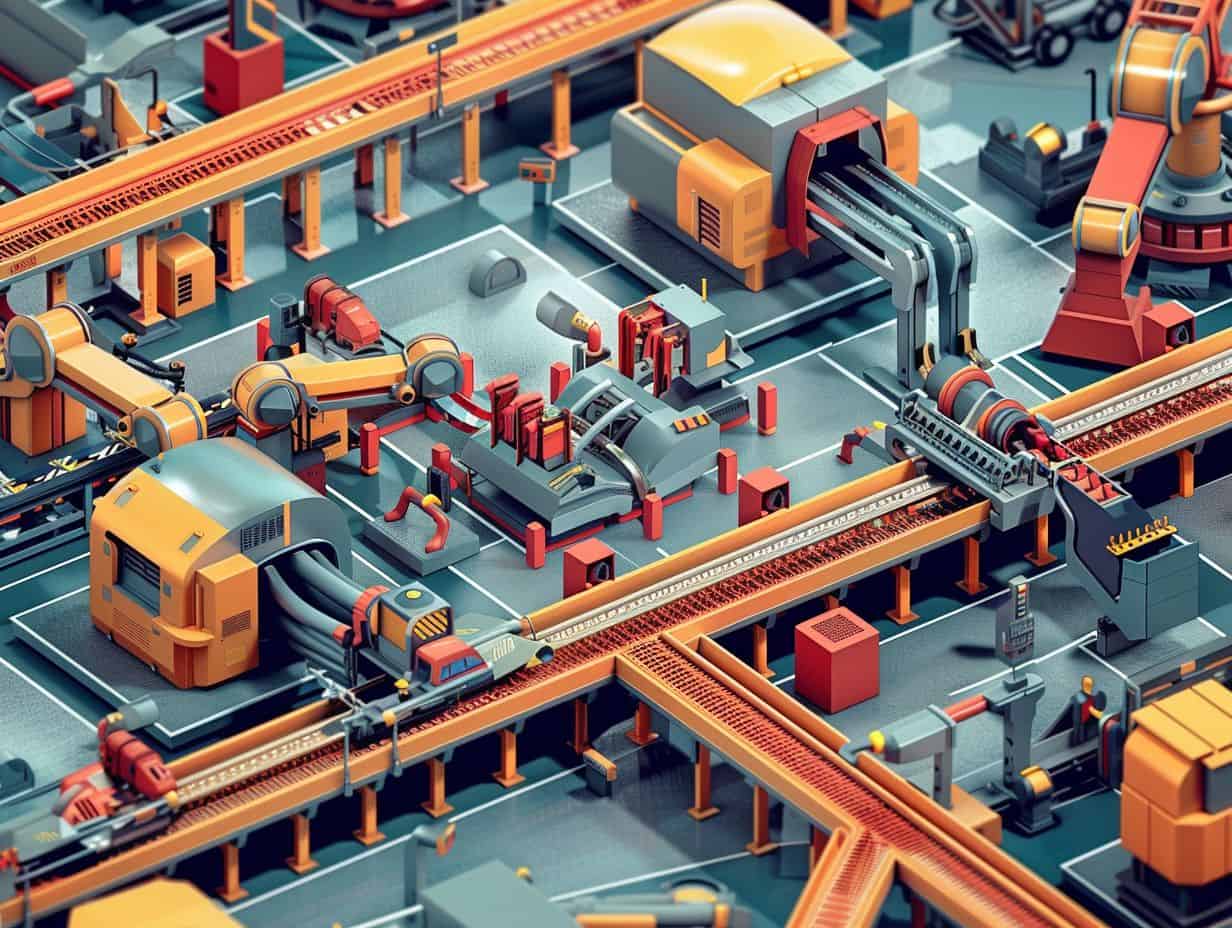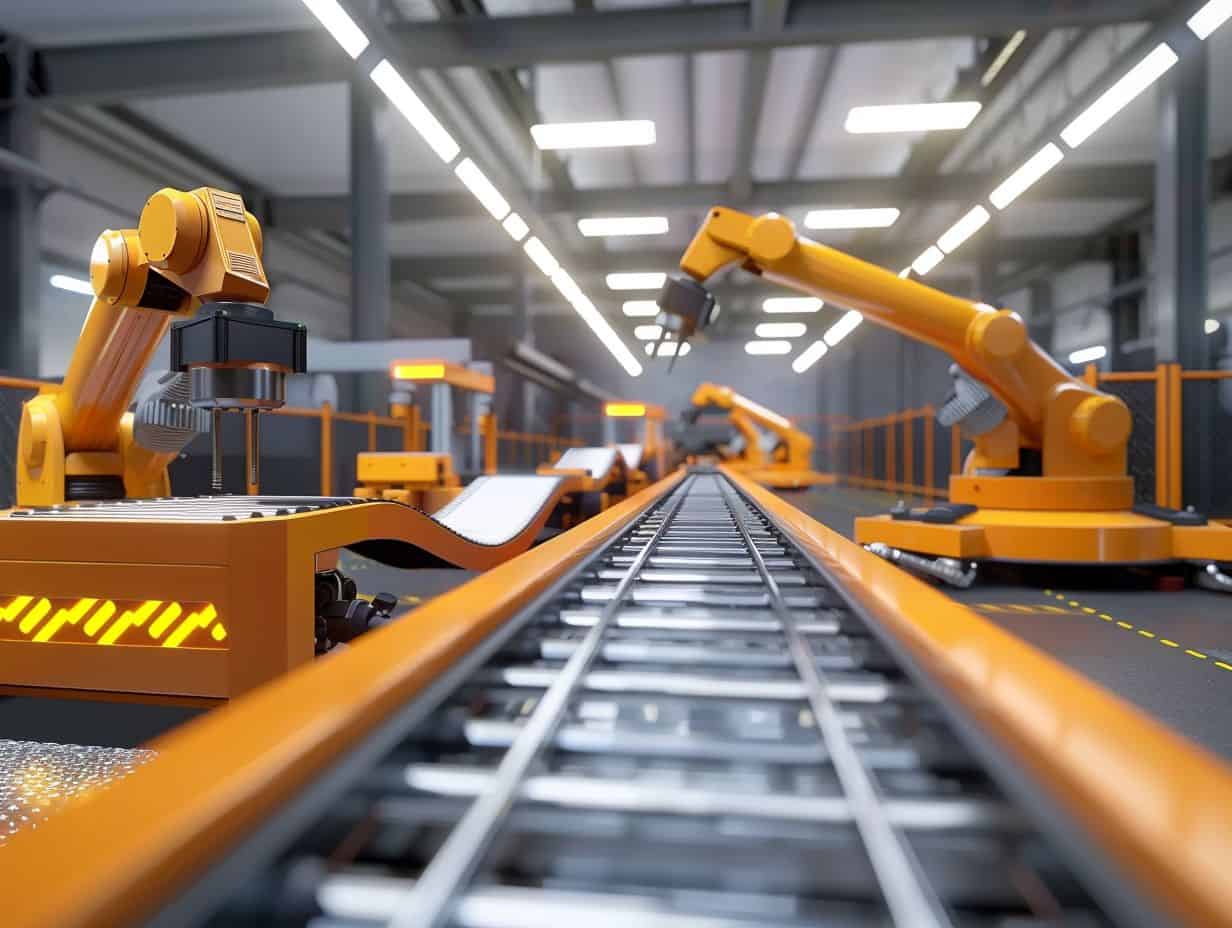MREs, or Meals Ready to Eat, are commonly used by military personnel, outdoor enthusiasts, and emergency response teams.
The history and various types of MREs will be examined, along with the significant role that automation plays in their production. Automation advancements have transformed the manufacturing process of MREs, enhancing efficiency, cost-effectiveness, consistency, and quality control.
The discussion will cover the challenges, limitations, and future prospects of automation in MRE production.
What are MREs?
MREs, also known as Meals Ready-to-Eat, are self-contained individual rations commonly used by the military, outdoor enthusiasts, and emergency responders. These meals offer a convenient and easily transportable solution for sustenance in various circumstances.
They serve a significant purpose in situations where traditional food preparation methods or facilities are not readily available, such as during military operations, camping expeditions, or disaster relief missions. Throughout the manufacturing and distribution process, MREs undergo thorough procedures to ensure their quality and shelf-life.
Technological advancements in MRE production have resulted in a wide range of menu choices, enhanced nutritional value, and packaging improvements that increase their portability and longevity. These pre-packaged meals have expanded beyond military applications, being utilized in sectors like healthcare, aviation, and outdoor recreation, highlighting their versatility and practicality in diverse environments.
History of MREs
The history of MREs can be traced back to the early days of preserved food provisions for military personnel. The Industrial Revolution brought about the concept of pre-packaged rations, which transformed the way sustenance was provided during military operations.
This pivotal period in MRE development saw significant advancements in preservation techniques and packaging methods due to technological progress. These innovations eventually led to the creation of compact, long-lasting meals designed to endure challenging conditions.
As the need for portable and durable food supplies grew, the military dedicated substantial resources to research and development. This investment resulted in enhancements in the taste, nutrition, and shelf life of MREs. The evolution of MREs illustrates how historical shifts and improvements in food technology have played a vital role in enhancing the quality and convenience of military rations.
Types of MREs
Various types of MREs are available today, encompassing traditional meals and specialized dietary options to accommodate a range of nutritional needs. Ongoing innovations in the manufacturing industry have resulted in the creation of MRE variants tailored to address specific dietary requirements.
These advancements have facilitated the development of MREs designed for individuals with gluten sensitivities, lactose intolerance, or vegan preferences, demonstrating the industry’s capacity to respond to changing consumer preferences. Improvements in packaging technology have enhanced shelf stability and portability, making MREs not only suitable for outdoor activities such as camping or hiking but also as emergency food supplies during disasters.
The flexibility and variety inherent in MRE offerings underscore the dynamic nature of the manufacturing industry in meeting the evolving demands of consumers.
Why is Automation Important in MRE Production?
Automation is essential in MRE production as it can streamline processes, improve efficiency, and incorporate advanced robotics systems. This integration of robotics technology guarantees that repetitive tasks are carried out accurately and quickly, minimizing errors and boosting overall output capacity.
Automation provides real-time monitoring and data analysis capabilities, allowing manufacturers to make data-informed decisions for ongoing process improvement. The smooth blend of robotics and automation in MRE production results in cost savings, enhances the quality and consistency of the final products, and meets the requirements of a changing market.
Efficiency and Cost Savings
Automation in MRE production enhances efficiency by optimizing processes, reducing manual labor, and employing advanced automation tools. This leads to streamlined production lines and improved production efficiency for MRE manufacturers.
The automation tools encompass robotic arms capable of executing repetitive tasks accurately and swiftly, minimizing errors and boosting output. Automated inventory management systems guarantee constant availability of raw materials, preventing production delays. Incorporation of IoT devices facilitates real-time monitoring of production processes, enabling prompt adjustments for optimal efficiency. Through the utilization of these advanced technologies, MRE manufacturers can attain elevated productivity levels while controlling costs, thereby enhancing competitiveness in the market.
Consistency and Quality Control
Automation in MRE production ensures consistency in product quality through automated quality control systems and stringent quality assurance protocols. By leveraging automation, manufacturers can maintain high standards of quality across their MRE product lines.
This adherence to quality control measures is crucial in the food industry, where maintaining product quality is paramount to consumer satisfaction and safety. Automation plays a vital role in the monitoring and regulation of various production processes, helping to identify and rectify any deviations from set standards promptly.
Through automated systems, manufacturers can closely monitor key quality parameters, such as ingredient proportions, processing temperatures, and packaging integrity, ensuring that each MRE meets the stringent quality benchmarks. This not only enhances operational efficiency but also reduces the margin of error, thereby increasing overall product quality and customer trust.
Worker Safety and Ergonomics

Automation in MRE production improves worker safety by automating repetitive tasks, minimizing manual handling, and promoting operational excellence. Prioritizing ergonomics and safety through automation helps manufacturers create a safer working environment for employees.
This shift towards automation reduces potential hazards linked to manual tasks, decreasing the risk of workplace injuries. Workers face fewer physically demanding activities and can concentrate on higher-level decision-making processes, leading to enhanced productivity and job satisfaction. Operational excellence in automated processes ensures that safety protocols are consistently upheld, further improving the overall work environment.
By integrating automation technologies, MRE production facilities can optimize workflows, streamline operations, and cultivate a culture of safety awareness among employees.
Examples of Automation Advancements in MRE Production
Advancements in automation for MRE production include automated assembly lines, robotic packaging systems, and integrated quality control systems. These technologies are designed to streamline production processes, improve efficiency, and enhance overall operational workflows.
In MRE production, robotics play a significant role as robotic arms autonomously handle ingredients and assemble components on the production line. For instance, robots equipped with specialized end-effectors can accurately measure and dispense ingredients to ensure consistency and precision in the final product. The integration of machines facilitates seamless coordination between different stages of production, such as automated mixing, portioning, and packaging. This integration helps reduce manual handling errors and increases productivity levels.
Automated Assembly Lines
Automated assembly lines are utilized in MRE production to incorporate machinery and smart manufacturing technologies, which help streamline the assembly process. By automating repetitive tasks and optimizing workflows, manufacturers can achieve increased production efficiency and output quality.
The use of these automated systems in MRE production not only accelerates manufacturing processes but also ensures a heightened level of precision and consistency in the final product. Through the integration of smart manufacturing solutions, such as predictive maintenance and real-time monitoring, potential issues can be promptly identified and resolved, thereby reducing downtimes and maximizing overall equipment effectiveness. This level of automation brings about a significant shift in the manufacturing of MREs, enhancing cost-effectiveness and sustainability in the long term.
Robotic Packaging Systems
Robotic packaging systems in MRE production utilize advanced robotics and data analysis to automate packaging processes. These systems ensure precise packaging, reduce errors, and optimize packaging workflows for increased efficiency.
By integrating robotics with data analysis, these cutting-edge systems can analyze real-time data to adjust packaging parameters instantly, ensuring consistency and quality across all MRE packages. The use of robotics allows for precise handling of products while reducing the risk of damage or contamination during packaging. The automated nature of these systems enables MRE manufacturers to meet high-volume demands without compromising on accuracy or speed, ultimately streamlining the packaging process.
The marriage of data analytics and robotics in packaging operations represents a leap forward in technological innovation, bringing unprecedented levels of efficiency and effectiveness to MRE production.
Automated Quality Control Systems
Automated quality control systems are utilized in MRE production to implement automation and quality assurance protocols for monitoring product quality and compliance. The automation of quality control processes allows manufacturers to ensure consistency and adherence to quality standards.
These automated systems streamline the inspection of both raw materials and finished products while also increasing efficiency by promptly identifying deviations in real-time. Integrating quality assurance measures into the production line facilitates the swift identification and resolution of any quality issues, thereby enhancing overall product quality.
By leveraging automated inspections and data analysis, manufacturers can uphold a high level of quality control and product consistency, providing benefits to both producers and consumers.
Challenges and Limitations of Automation in MRE Production
Despite the various advantages, automation in MRE production encounters challenges such as high initial investment costs, integration complexity, and the requirement for skilled technicians to operate and maintain automated systems.
These challenges can be intimidating for companies considering the adoption of automation solutions in their MRE production processes. The significant initial investment costs associated with acquiring and setting up automated equipment may pose a financial barrier that dissuades some businesses from transitioning.
The process of integrating automation into existing operations can be intricate, often necessitating the reconfiguration of workflows and the establishment of seamless communication between different systems. Successful integration demands expertise and specialized knowledge to prevent disruptions and ensure optimal performance. Skilled technicians are essential in overseeing and troubleshooting automated systems, underscoring the continual demand for trained professionals in the field.
To tackle these challenges, companies must invest in integration solutions that simplify the incorporation of automation technologies and guarantee effective coordination across all production process components.
High Initial Investment Costs

One of the challenges in automated MRE production is the high initial investment costs involved in setting up automated systems. Manufacturers must devise strategies to reduce costs and save time in order to justify the upfront expenses.
In the current competitive market, companies face pressure to embrace automation to maintain efficiency and competitiveness. The substantial initial costs may discourage many from making the transition.
To address this challenge, businesses can explore different approaches to cost optimization. This may include conducting detailed cost-benefit analyses, negotiating with suppliers for better prices on automation equipment, or considering phased implementation to spread out costs.
Implementing time-saving measures like integrating predictive maintenance schedules or optimizing production workflows can enhance efficiency and minimize downtime, leading to cost savings in the long term.
Complexity of Integration
The challenge of integrating automation into MRE production is primarily due to its complexity. Manufacturers need to concentrate on streamlining operations and utilizing industrial engineering practices to ensure the seamless integration of automated systems.
This process involves meticulous planning to align processes, identify bottlenecks, and enhance workflow efficiencies. By applying industrial engineering principles, manufacturers can revamp workflows, establish standardized procedures, and optimize production cycles to facilitate better automation integration.
The use of analytical tools and real-time data monitoring enables continuous improvement and adaptation of automation systems to meet changing production requirements. Employing a comprehensive approach that combines operational streamlining with industrial engineering solutions enables manufacturers to effectively navigate the complexities of integrating automation into MRE production.
Need for Skilled Technicians
The implementation of automation in MRE production facilities poses a challenge due to the need for skilled technicians. Manufacturers must allocate resources to training programs aimed at equipping technicians with the necessary skills to operate automated systems efficiently and enhance production workflows.
Skilled technicians who are adept at managing automation are essential for maintaining smooth operations in MRE production. These technicians are responsible for overseeing automated processes, addressing any issues that may arise, and ensuring equipment maintenance to minimize downtime. Their proficiency directly influences production efficiency, resulting in increased output and enhanced product quality.
By investing in ongoing training and skill development for technicians, manufacturers can remain competitive in the MRE market and foster innovation in production processes.
Future of Automation in MRE Production
The future of automation in MRE production shows promising potential due to advancements in artificial intelligence and machine learning technologies. The integration of AI and ML is expected to bring significant improvements to MRE manufacturing processes, leading to increased efficiency and optimization.
These advanced technologies are positioned to simplify various stages of MRE production, including ingredient sourcing, quality control, packaging, and distribution. With AI’s capability to analyze large volumes of data and ML’s ability to enhance itself over time, manufacturers can anticipate improved accuracy in demand forecasting, reduced production expenses, and faster time-to-market for their MRE products.
The incorporation of AI and ML could result in adaptive production systems that can dynamically adjust to market demands in real-time, creating a manufacturing ecosystem that is more agile and responsive.
Advancements in Artificial Intelligence and Machine Learning
Advancements in artificial intelligence and machine learning have the potential to revolutionize MRE production by introducing enhanced automation tools and AI-driven performance optimization. The incorporation of AI technology facilitates predictive analytics and real-time decision-making to improve production processes.
These state-of-the-art technologies have transformed the operations of MRE production facilities, allowing for precise monitoring and real-time adjustments. By utilizing AI algorithms, organizations can optimize their workflows, reduce downtime, and increase production efficiency. The capability of AI systems to analyze large datasets and recognize patterns leads to more precise forecasting and proactive maintenance strategies. This not only boosts operational effectiveness but also lowers expenses related to equipment malfunctions and unforeseen downtime.
Integration of Internet of Things (IoT)
The incorporation of the Internet of Things (IoT) in MRE production enhances connectivity and automates workflow. IoT devices and sensors support data-driven insights, predictive maintenance, and improved operational efficiency in manufacturing processes.
By utilizing IoT technology, manufacturers can monitor equipment performance in real-time, monitor energy consumption levels, and predict potential breakdowns before they occur. This proactive maintenance approach helps minimize downtime, boost productivity, and save costs.
IoT integration also enhances supply chain management by improving transparency and traceability. The interconnected IoT devices create a more agile and responsive production environment, resulting in competitive advantages for MRE producers.
Potential for Fully Automated Production Lines

The potential for fully automated production lines in MRE manufacturing represents a shift towards smart production practices and sustainable manufacturing. Embracing automation allows manufacturers to improve production efficiency, minimize waste, and implement sustainable practices for long-term operational excellence.
This shift in production processes not only simplifies operations but also reduces human error, resulting in consistent product quality. Automation enables real-time monitoring of the manufacturing process, facilitating quick adjustments to optimize output and decrease energy consumption.
Smart production technologies can support predictive maintenance, reducing downtime and ensuring equipment operates at peak efficiency levels. By incorporating sustainable practices into automated manufacturing, companies can contribute to a more environmentally friendly future, achieve cost savings, and enhance competitiveness in the market.
Frequently Asked Questions
What is the purpose of automating production lines for MRE efficiency?
The purpose of automating production lines for MRE efficiency is to increase productivity, reduce costs, and improve the overall quality and consistency of MREs. By implementing automation technology, tasks that were previously done manually can now be completed at a faster and more accurate rate.
How does automation technology streamline production lines for MRE efficiency?
Automation technology, such as robotics and machine learning, can streamline production lines for MRE efficiency by performing repetitive tasks with precision and speed. This eliminates the potential for human error and frees up employees to focus on more complex tasks, resulting in a more efficient process overall.
What are some examples of automation advancements being used in MRE production?
Some examples of automation advancements being used in MRE production include automated weighing and measuring of ingredients, robotic packaging and labeling, and computer-aided quality control. These advancements not only speed up the production process, but also ensure consistency and accuracy in the final product.
How does automating production lines for MRE efficiency benefit companies?
Automating production lines for MRE efficiency benefits companies by reducing labor costs, increasing output, and improving product quality. With automation technology, companies can produce more MREs in less time and with fewer resources, resulting in a more profitable and competitive business.
What challenges may arise when implementing automation advancements in MRE production?
Some challenges that may arise when implementing automation advancements in MRE production include upfront costs, technical difficulties, and employee training. It’s important for companies to carefully plan and budget for automation implementation, and provide proper training and support for employees to adapt to the new technology.
How can companies ensure the safety and quality of MREs when using automation technology?
Companies can ensure the safety and quality of MREs when using automation technology by regularly maintaining and calibrating equipment, implementing strict quality control measures, and conducting thorough testing and inspections. Additionally, having trained employees oversee the automation process can help catch any errors or malfunctions before they affect the final product.


